Pulitzer Presents Major Exhibition of the Work of Pioneer and Provocateur Hannah Wilke, Pivotal Figure in Postwar American Art
- ST. LOUIS, Missouri
- /
- February 11, 2021
The Pulitzer Arts Foundation presents Hannah Wilke: Art for Life’s Sake, the first major exhibition of Wilke’s groundbreaking work in over a decade. One of the foremost American artists to emerge in the 1960s, Hannah Wilke (1940–1993) developed an unabashed, boundary-crossing art practice that included sculpture, photography, video, and works on paper. Her experimental techniques and provocative new forms express the vitality and pleasures of the body, applying a feminist critique to her era’s repressive norms of gender and sexuality to create work that affirms life. “I have always used my art to have life around me,” Wilke proclaimed. “Art is for life’s sake.”
On view at the Pulitzer from June 4, 2021, through January 16, 2022, Hannah Wilke: Art for Life’s Sake will encompass the full arc of Wilke’s practice from the 1960s to her untimely death in 1993. The artist’s versatility and innovative approach to materials will be demonstrated through a rich selection of photography, video, and works on paper, as well as sculptures in clay, latex, chewing gum, and other non-traditional materials. With nearly 120 objects on display, this exhibition will offer new perspectives on this highly influential artist, revealing her to be a trailblazer who was as invested in advancing the position of women in society as she was in developing a unique artistic practice.
Hannah Wilke: Art for Life’s Sake has been curated by Pulitzer Arts Foundation Curator Tamara H. Schenkenberg.
Pulitzer Executive Director Cara Starke states, “Wilke’s groundbreaking visual expressions of her ideas about life-affirmation and women’s agency continue to resonate today. We are honored to present this important exhibition of her work, which considers her accomplishments in the context of the present moment.”
Dr. Schenkenberg adds, “Hannah Wilke: Art for Life’s Sake shows Wilke to be one of the boldest and most innovative artists of her era. In fearlessly breaking with traditional views of both women and artmaking, she opened the door to new materials, techniques, and imagery, and to work that tackles complex subjects with wit, thoughtfulness, and a deep humanity.”
Exhibition Description
Hannah Wilke: Art for Life’s Sake unfolds in loosely chronological order, beginning with a selection of drawings and works in clay that, dating from the early- to mid-1960s, reveal Wilke’s emerging focus on the body and erotic forms. In the multi-part work Five Androgynous and Vaginal Sculptures (1961), for example, she worked clay into vessel-like forms with openings and protrusions that suggest genitalia and other body parts. Additionally, she accentuated the rough surfaces of the unglazed terracotta through repeated scorings and dense clotting of extruded clay, exhibiting her rejection of the potter’s wheel in favor of shaping the clay with her hands and simple tools.
As the exhibition continues, it highlights Wilke’s evolving approach to clay as she developed her signature feminist iconography—the abstracted vaginal form. For Wilke, this form was a means to affirming her body and validating women’s experiences. The solid, vessel-like sculptures from the early 1960s give way to constructions of loosely gathered layers, which by the early 1970s were distilled into a form consisting of a single layer of clay that is folded and tucked around a central opening. Later in the decade, she began creating multi-part works using this new, more pared-down mode of form-making. In works such as Elective Affinities (1978), she used the technique, which was founded on the transformation of each work from a flat disc of clay into a unique three-dimensional form, to make 86 delicate porcelain sculptures, all subtly different, which she arranged in configurations of square numbers—9, 16, 25, 36—as a play on the seriality of Minimalism. Wilke’s multiplication, however, was also intended to evoke cell division and the proliferation of life, affirming the connections and differences among her sculptures and, by extension, humanity.
From the beginning of her career, Wilke’s innovative forms emerged from her engagement with a variety of soft materials beyond clay, including kneaded erasers and latex. In one of her most monumental pieces, Ponder-r-rosa 4, White Plains, Yellow Rocks (1975) (see image on page 1), she poured, folded, and snapped together layers of latex, creating—as she did with all of her work in this material—an effect of blossoming and unfolding that celebrates the vitality and sensuality of nature and the female body. The theme of playful eroticism is also carried through a series of sculptures Wilke made from chewing gum—yet another unconventional, soft material, here with ties to popular and commercial culture—that she stretched and folded into minute, vividly colored vulvas.
The museum’s lower galleries highlight Wilke’s iconic work in photography and video, displayed alongside further examples of her continuing experiments in sculpture and work on paper. In a video titled Gestures (1974), the artist touches her face in repetitive, morphing movements, manipulating her skin and features as if she were sculpting in clay. In so doing, she asserts her agency over her own body while simultaneously revealing its expressive potential as a medium.
In a group of photographs known as S.O.S. Starification Object Series (1974), Wilke critiques the visual language of fashion and advertising, showing herself, frequently half naked, with her gum sculptures arrayed across her body in patterns that evoke scars. This interrupted glamor takes on the stifling conformity fed by the commodification and stereotyping of individuals, especially women.
A large gallery is devoted to the extraordinary bodies of work that document Wilke’s mother’s and, later, her own, long and ultimately fatal struggles with cancer. As her Starification Object Series challenged conventional representations of women, so too do these works. Wilke’s wry humor persists in the Intra-Venus series of photographs (1991–92), where she lays bare the changes to her body stemming from cancer treatments. In the diptych Intra-Venus Series No. 4, July 26 and February 19, 1992 (1992), the right-hand image shows Wilke with a blue blanket wrapped around her head referencing depictions of the Madonna, eyes closed, head slightly tilted; the left-hand image shows her nude from the waist up, in a conventionally coquettish pose that is interrupted by her sallow complexion and an intravenous tube inserted in her hand.
In tribute to Wilke’s ongoing belief that art is about affirming life, Hannah Wilke: Art for Life’s Sake concludes with a selection of works inspired by nature, a perennial theme in her practice. She frequently explored the form and imagery of flowers, and many of her ceramic and latex sculptures refer abstractly to petals, buds, and blooming growth. Other works, like an untitled ink drawing (1990), are more traditional representations of flowers.
Wilke took inspiration from both the formal qualities of flowers and their allusion to the cycle of life as well as to femininity. For her, nature offered scope for feminist fantasies, freed from cultural constraints, as seen in photographs of her gum sculptures placed on various plants, as well as in her kneaded eraser collages. In works like Seashore (1975), she placed tiny vulvas shaped from kneaded erasers onto vintage postcards of scenic vistas, creating an erratic swarm of minute vaginal forms seems to be tumbling through the air, echoing the coastline with freewheeling energy.
Publication
A richly illustrated scholarly catalogue will accompany the exhibition. Co-published by the Pulitzer and Princeton University Press, it will feature essays by Schenkenberg; Connie Butler, Chief Curator at the Hammer Museum, Los Angeles; and Glenn Adamson, Senior Scholar at the Yale Center for British Art, New Haven, as well as short essays on Wilke’s work by contemporary artists Hayv Kahraman, Nadia Myre, Jeanine Oleson, and Catherine Opie. The 246-page catalogue will also include a recently uncovered, previously unpublished 1975 interview between Wilke and art historian Cindy Nemser and an extended narrative chronology of Wilke’s life. The catalogue will be available for purchase in the fall of 2021.
Support
Hannah Wilke: Art for Life’s Sake is funded in part by a generous grant from the Scintilla Foundation. It is also a part of the Feminist Art Coalition—of which the Pulitzer is a participating institution—to raise cultural awareness of feminist thought, experience, and action.
About the Pulitzer Arts Foundation
The Pulitzer Arts Foundation is an art museum dedicated to fostering meaningful experiences with art and architecture. Since its founding in 2001, the museum has presented art from around the world in its celebrated building by Tadao Ando and its surrounding neighborhood. Offering personal encounters with art, the Pulitzer brings art and people together to explore ideas and inspire new perspectives.
The Pulitzer campus is located in the Grand Center Arts District of St. Louis, Missouri, and includes the museum, the Park-Like garden, a tree grove, and the forthcoming Spring Church (opening spring 2021). The museum is open Thursday through Sunday, 10am–5pm, with evening hours until 8pm on Friday. Admission is free but due to COVID-19 precautions, reservations are required at this time. For more information, visit pulitzerarts.org.
###
Contact:
3147541850

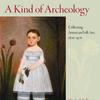

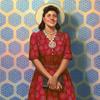
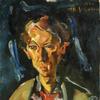
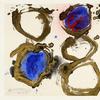
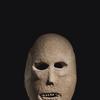
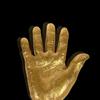

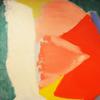

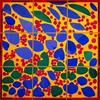


10100x100_c.jpg)

